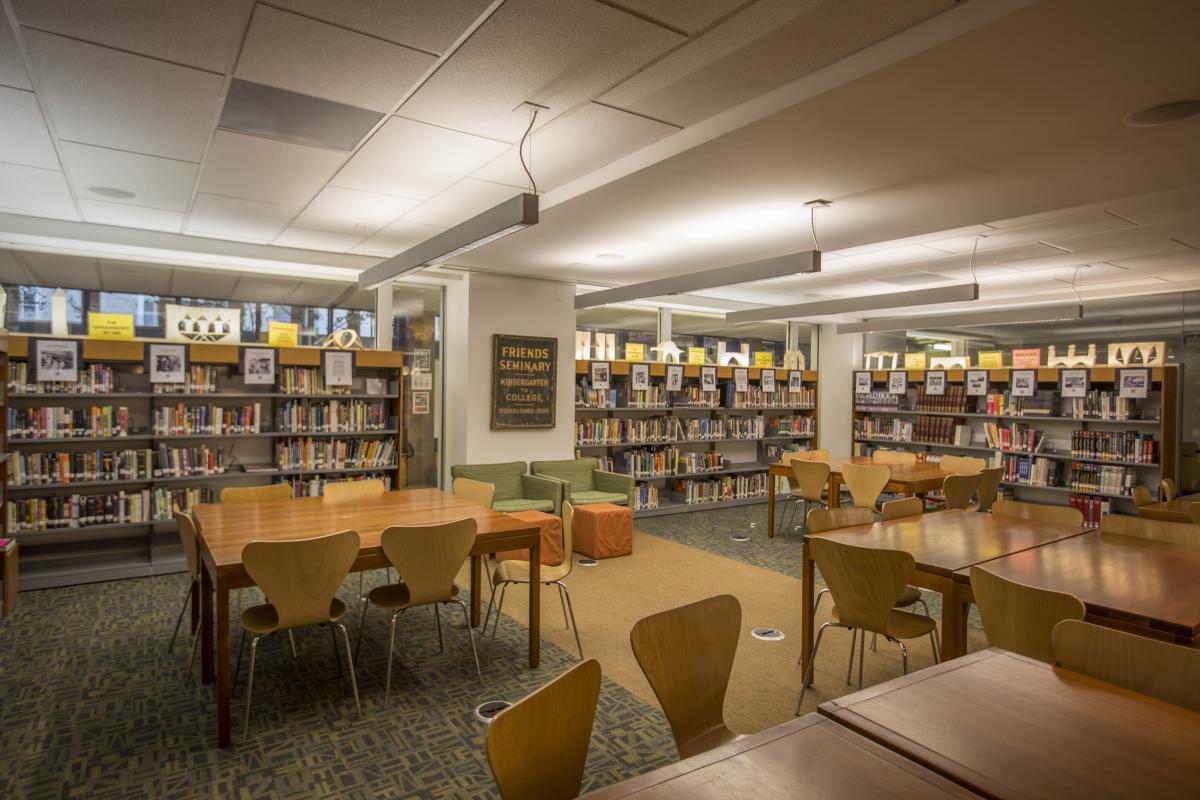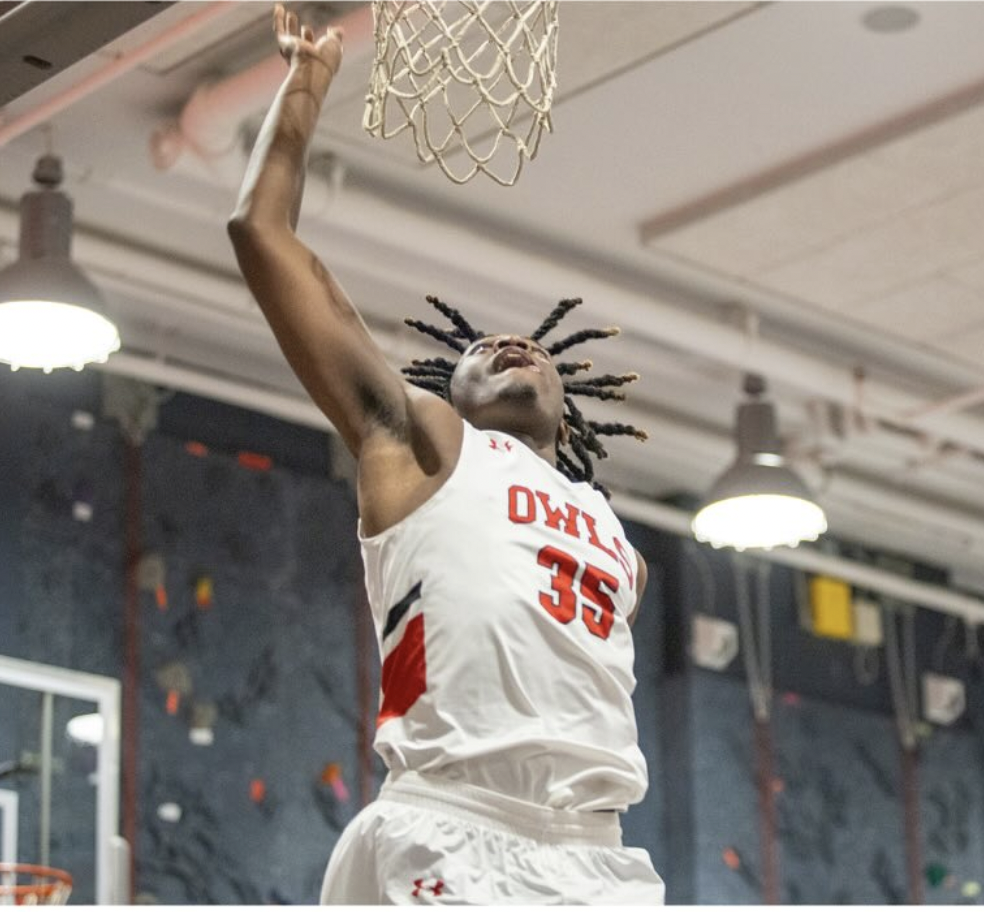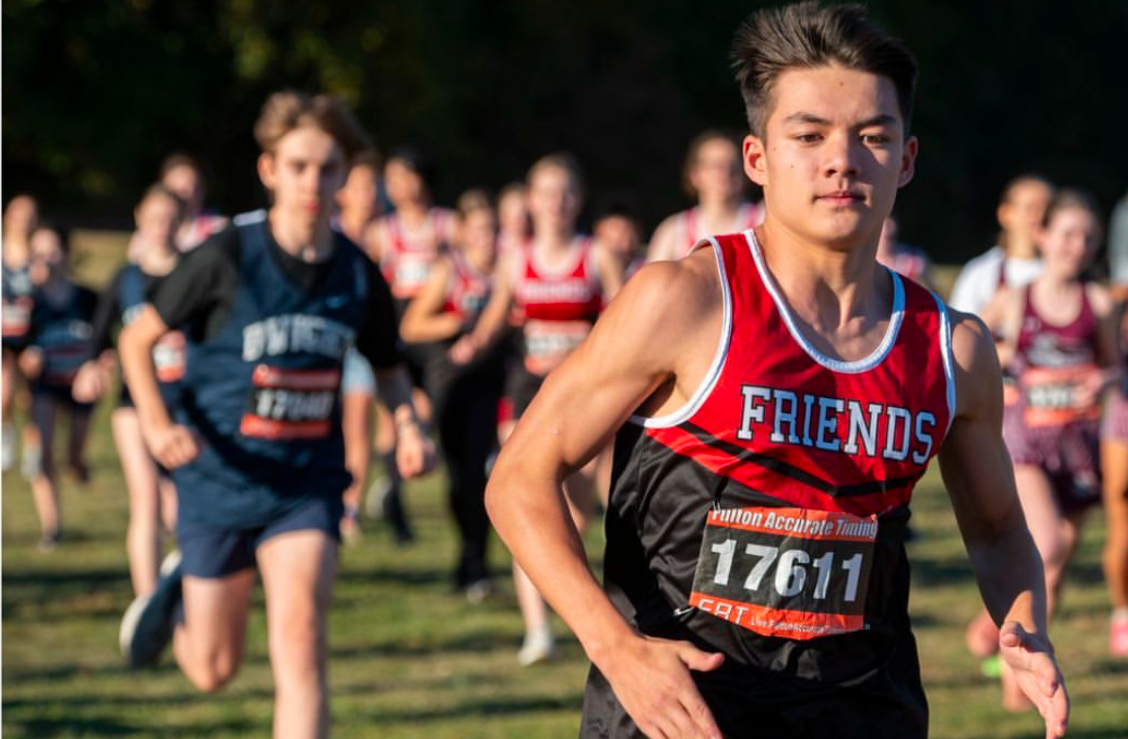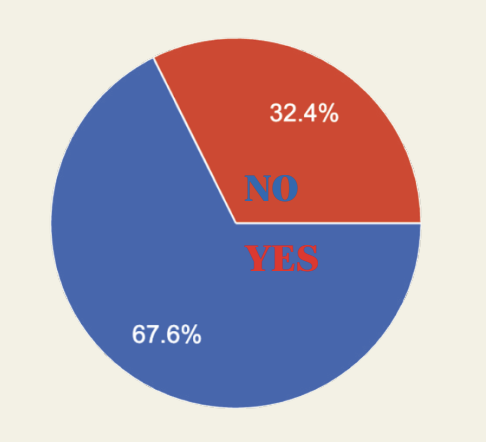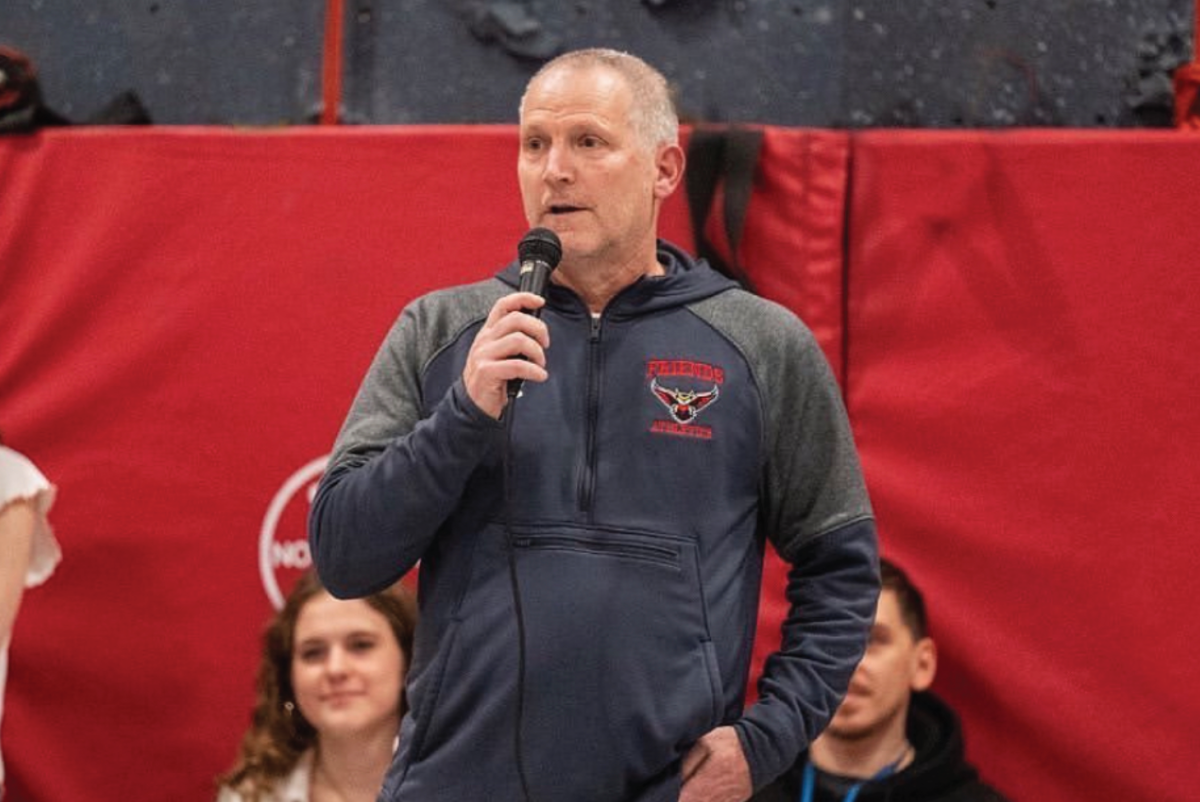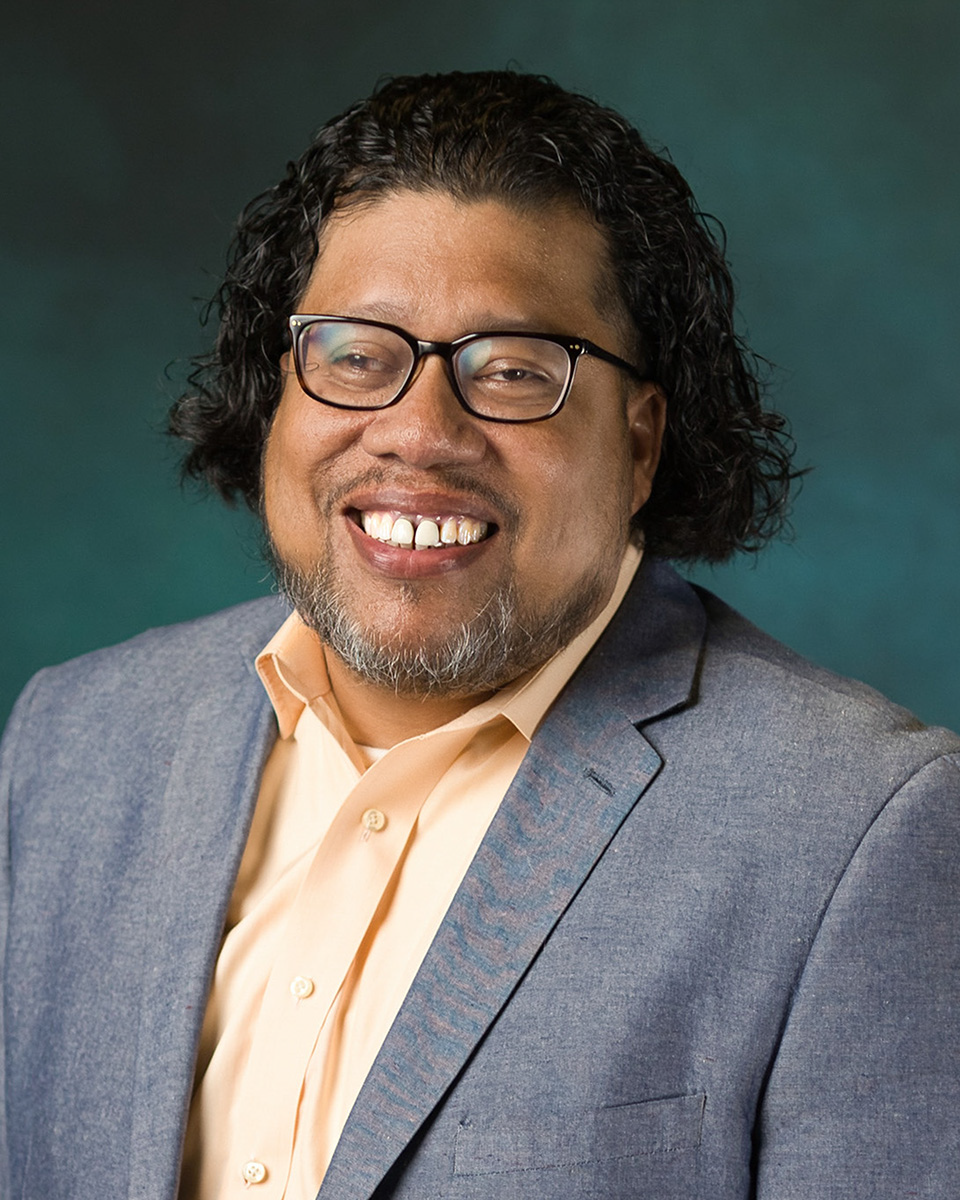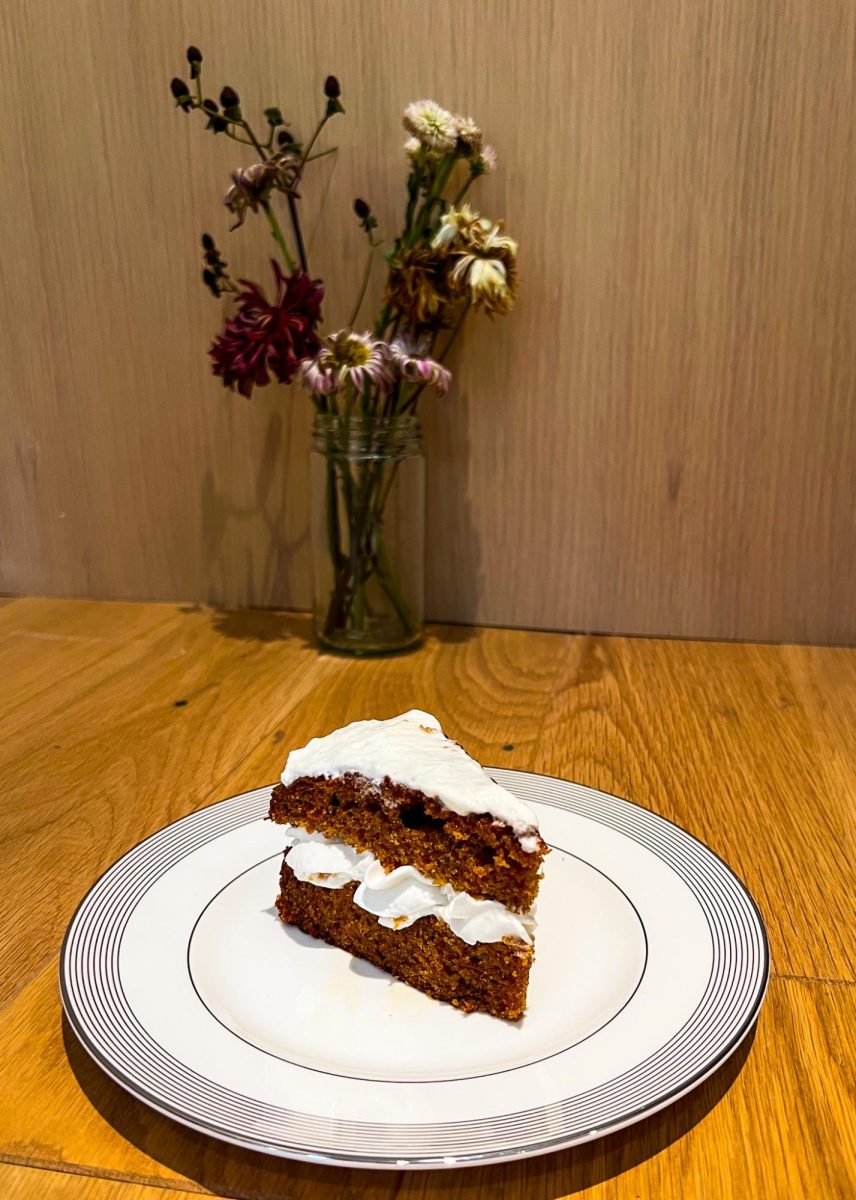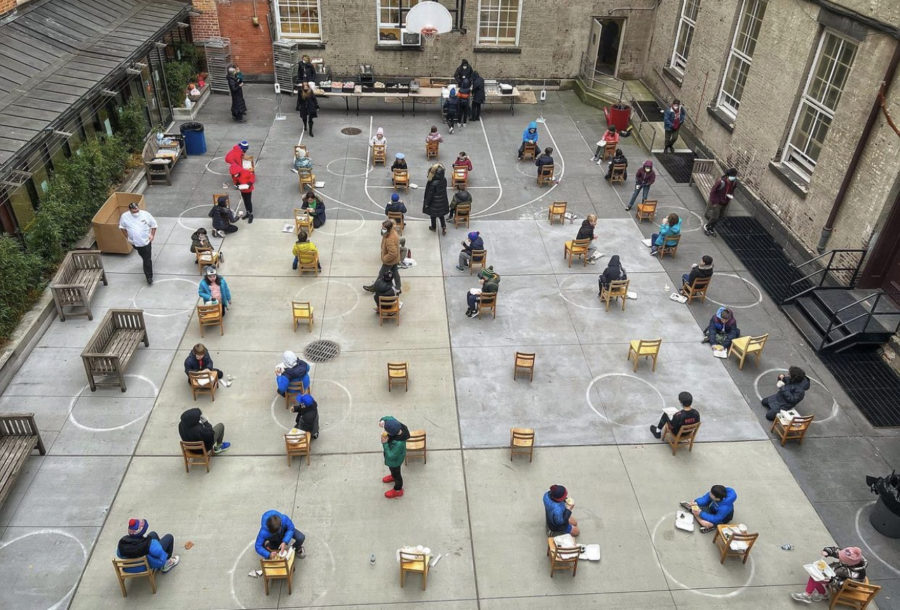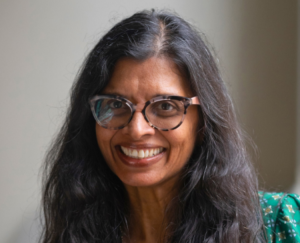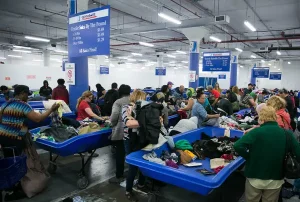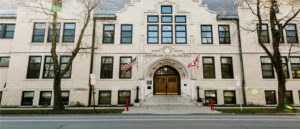Community Looks Back on Omicron Peak
Friends Seminary Communications
Lower school students eat lunch socially-distanced on the first day back from Winter Break.
February 17, 2022
After winter break, Upper School students and faculty returned to school in-person despite the rising reports of Delta and Omicron cases inside and outside of the Friends Seminary community. Despite the current decline in cases, as the first semester drew to a close, students and faculty reflected on how the COVID-19 resurgence impacted their daily lives and the threats that the virus posed to in-person learning and school events.
Many people experienced heightened anxiety amidst the COVID-19 resurgence, especially due to the contagious Omicron variant. “I’m worried that I’m going to get it; my family, my friends, the people I love are going to get it,” Maya Martinez ’24 said. She added, “By coming to school, I could endanger my family members when I want to see them, or endanger my friends.” Kristen Marchilena, a Middle and Upper School music teacher, explained that her family had “gone back to full quarantine-mode.”
Martinez also noted that her family had “been limiting social interactions outside the school.” Martinez avoided the subway to limit contact. “My mom has had to drive me everywhere, or I’ve had to walk,” she said.
The school made changes to the COVID-19 policies in response to the rising number of cases. “[We] backtracked a little bit on spectators at athletic events, audiences at concerts and productions,” Will Hopkins, the Academic Dean, said when asked about these changes. He added that the school had spaced out the seating for Meeting for Worship and updated the “system of contact tracing and reporting so that it’s more capable of keeping up with the increasing cases.”
“As people were coming back from the holidays, we tried to make lunch times, when people have to remove their masks, a little bit safer by having them outside for lower school and middle school and either outside or well spaced for upper school students,” Hopkins said. He explained that these heightened lunch restrictions were set in place because many people had returned to school after traveling or visiting friends and family. “We wanted to be extra vigilant knowing that there’s some extra heightened risk associated with those activities,” Hopkins said.
Due to the sustained relevance and extremity of the virus, students and faculty worried that the resurgence was a sign that the situation may worsen. “It’s nerve wracking that I’m going into college and I don’t know how the college is going to handle this compared to Friends,” said Jordan Greenberg ‘22. If cases continued to rise, Hopkins explained that he “could see us going even further and limiting the play of athletics. I could imagine if things got severe, the Meetings for Announcements and Meetings for Worship would be even more impacted.” He added, “If we were shut down for a period of more than a day or two, we would transition to a remote program.”
The increasing number of absences not only limited student and faculty interaction, but it also impacted how classes functioned. For example, Marchilena explained that the limited number of students in her class was “tricky because it’s hard to know how to plan or what to plan for and feeling like I [had] to re-teach.” Similarly, Hopkins said that COVID-19 related absences caused students to “miss out on collective discussions and ideas.”
Despite the disappointments and anxieties catalyzed by the COVID-19 resurgence, Martinez is grateful that school has remained in-person. “I think classroom learning is more enriching. There’s a part of school you can’t get online,” she said. “Coming back in-person has helped me so much because it has allowed me to keep up with my academics and also maintain my social life.”

